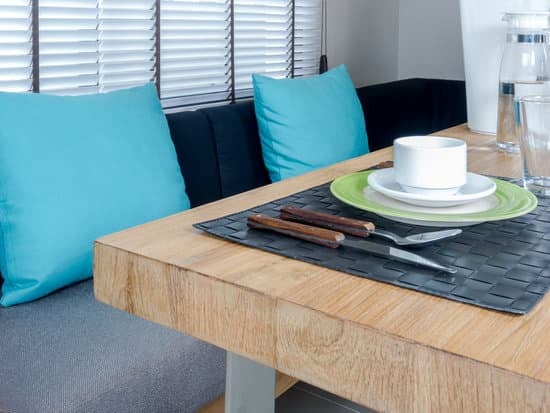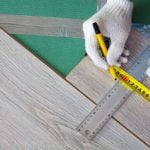Home improvements can be a significant investment for homeowners, whether it’s renovating a kitchen, adding an extra room, or upgrading the HVAC system. But did you know that you may be able to write off some of these expenses on your taxes? In this article, we will explore the world of tax deductions for home improvements and help you determine if you can benefit from them.
Understanding tax deductions and how they work can be crucial in managing your finances effectively. When it comes to home improvements, knowing which expenses are eligible for deductions can help offset some of the costs involved. This valuable information can make a significant difference in your decision-making process when planning renovations or repairs.
In this comprehensive guide, we will walk you through different aspects related to tax deductions for home improvements. We’ll discuss the types of improvements that may qualify, explain the criteria you must meet to claim these deductions successfully, and provide you with expert advice on maximizing these savings. Additionally, we’ll debunk common myths and misconceptions surrounding this topic while providing alternative ways to save money on your home improvement projects.
By exploring this guide thoroughly, you’ll gain a deeper understanding of whether or not you can benefit from tax deductions for your home improvements. So let’s dive in and discover how you may be able to enjoy potential savings while enhancing your living space.
Understanding Tax Deductions and Home Improvements
What are Tax Deductions?
Tax deductions are expenses that you can subtract from your taxable income, which can lower the amount of taxes you owe. Home improvements can potentially qualify for tax deductions if they meet certain criteria set by the Internal Revenue Service (IRS). This means that you may be able to reduce your tax liability and save money by properly claiming these deductions.
Benefits of Tax Deductions for Home Improvements
Understanding the benefits of tax deductions for home improvements is essential in maximizing your savings. When you claim tax deductions for eligible home improvements, you can potentially:
- Reduce Taxable Income: By deducting home improvement expenses from your taxable income, you can lower the overall amount on which your taxes are based. This ultimately results in a reduced tax liability.
- Increase Property Value: Many home improvements not only enhance the aesthetic appeal of your property but also increase its value. By investing in eligible improvements and claiming tax deductions, homeowners have an opportunity to recoup some of their investment through increased property value.
- Save Money: The ability to deduct qualified home improvement expenses from your taxes translates to potential savings. These savings can then be reinvested into additional renovations or used for other financial goals.
Eligibility for Tax Deductions
To qualify for tax deductions on home improvements, there are certain criteria that must be met. Generally, the IRS considers two factors – purpose and timing:
- Purpose: The purpose of the home improvement must be to maintain or improve the condition of your property. It should add value or prolong the usefulness of the property.
- Timing: The IRS requires that you own and reside in the property while making eligible improvements. Additionally, these improvements should have been completed within a specific time frame before selling or placing it on rent.
It’s important to note that not all home improvements will qualify for tax deductions. It is advisable to consult with a tax professional or refer to the IRS guidelines to determine which improvements are eligible and the specific criteria that need to be met.
Types of Home Improvements that Can Be Tax Deductible
When it comes to home improvements, not all expenses can be tax deductible. However, there are certain types of home improvements that may qualify for deductions. It’s important to understand what these improvements are in order to take advantage of potential tax benefits.
Energy-Efficient Improvements
One type of home improvement that can be tax deductible is energy-efficient upgrades. These include installing solar panels, energy-efficient windows, doors, and insulation, as well as upgrading heating and cooling systems to more efficient models. The government provides incentives for homeowners to reduce their energy consumption and promote renewable energy sources. By making these energy-efficient improvements, homeowners may be eligible for tax credits or deductions.
Medical Necessity Modifications
Another category of home improvements that may qualify for tax deductions is those that are medically necessary. These modifications are made to accommodate a resident’s medical condition or disability. Examples include adding wheelchair ramps, widening doorways, installing grab bars in bathrooms, or modifying kitchen countertops for better accessibility. In order to qualify for a deduction for these types of improvements, the modification must primarily benefit the individual with the medical condition or disability.
Home Offices
If you use part of your home exclusively as a home office for your business or self-employment activities, you may be able to deduct certain home office improvements. This includes renovations such as painting the office walls, replacing flooring, or purchasing office furniture and equipment. However, it’s important to note that the space must be used solely for business purposes in order to be eligible for deductions.
While these are some common examples of home improvements that may qualify for tax deductions, it’s always advisable to consult with a tax professional or financial advisor who can provide guidance specific to your individual situation. They can help determine if your planned home improvement projects meet the criteria set by the Internal Revenue Service (IRS) and advise on how to properly document and claim these deductions on your tax return.
Qualifying for Tax Deductions
In order to qualify for tax deductions on home improvements, there are certain criteria that homeowners need to meet. Understanding these criteria is crucial for maximizing the benefits of tax deductions.
First and foremost, it is important to note that not all home improvements are eligible for tax deductions. The IRS has specific guidelines regarding what constitutes a qualifying improvement. Generally, the improvement must add value to the property or prolong its useful life. This means that basic repairs and maintenance, such as fixing a leaky roof or repainting a room, do not qualify for tax deductions.
To be eligible for tax deductions, the improvement must also be considered a capital improvement. This means that it must be a substantial project that enhances the overall value of the property. Examples of qualifying capital improvements include adding a swimming pool, installing solar panels, or renovating a kitchen or bathroom.
Additionally, it is important to keep detailed records of all expenses related to the home improvement project. This includes receipts, invoices, and any other documents that prove you made an investment in your property. Without proper documentation, it may be difficult to support your claim for tax deductions.
Meeting these criteria can help homeowners determine whether their home improvement projects qualify for tax deductions. By understanding these requirements and keeping accurate records, homeowners can ensure they are maximizing their potential savings while undertaking valuable improvements on their homes.
Step-by-Step Guide to Claiming Tax Deductions for Home Improvements
Step-by-Step Guide to Claiming Tax Deductions for Home Improvements
Claiming tax deductions for home improvements can be a valuable way to save money and recoup some of the costs associated with renovating or upgrading your property. However, it’s important to understand the process and meet certain criteria in order to qualify for these deductions. This step-by-step guide will walk you through the process of claiming tax deductions for home improvements.
Step 1: Determine Eligible Expenses
The first step is to determine which home improvements are eligible for tax deductions. In general, only improvements that add value to your home or make it more energy-efficient are eligible. This can include projects such as installing solar panels, replacing windows and doors, adding insulation, or updating heating and cooling systems. It’s important to keep detailed records of all expenses related to these improvements.
Step 2: Gather Supporting Documentation
Next, gather all necessary supporting documentation for your tax deductions. This may include receipts, invoices, contracts, and any other relevant paperwork that proves the cost and nature of the home improvement project. These documents will be crucial in substantiating your claim and demonstrating that the expenses are legitimate.
Step 3: Itemize Deductions on Your Tax Return
When filing your tax return, you will need to itemize your deductions instead of taking the standard deduction in order to claim tax deductions for home improvements. Keep in mind that you must meet certain criteria, such as owning the property and using it as your primary residence, in order to qualify. Consult with a tax professional if you have any questions or need assistance with this process.
Step 4: Consult with a Tax Professional
While it’s possible to navigate the process of claiming tax deductions for home improvements on your own, it can be helpful to consult with a tax professional. They can provide guidance specific to your situation and ensure that you maximize your deductions while staying in compliance with tax laws and regulations.
Step 5: Keep Records of Previous Improvements
Lastly, it’s important to keep records of all previous home improvements. Even if you are not eligible for tax deductions this year, you may be able to claim them in the future. By documenting your expenses and maintaining organized records, you’ll be prepared to take advantage of any potential deductions in the years ahead.
Common Misconceptions and Myths about Tax Deductions for Home Improvements
When it comes to tax deductions for home improvements, there are several common misconceptions and myths that can lead to confusion. Understanding these myths and knowing the truth behind them can help homeowners navigate the process of claiming tax deductions more effectively.
One common misconception is that all home improvements are eligible for tax deductions. In reality, only certain types of home improvements qualify for deductions. For example, renovations that increase a home’s energy efficiency or make it more accessible for individuals with disabilities may be eligible for tax deductions. It’s important to research and understand which specific improvements meet the criteria set by the government to ensure you can claim the appropriate deductions.
Another myth is that you can deduct the full cost of your home improvement project from your taxes. This is not true; instead, you can deduct a portion of the cost based on its qualifying criteria.
This means that if you spent $20,000 on a solar panel installation, you may only be able to deduct a percentage of that cost depending on certain factors like how much energy it produces and how long it will take to recoup the investment.
A common misconception is also that claiming tax deductions for home improvements automatically increases your chances of an audit by the IRS. While it’s true that large or unusually high deduction claims can trigger an audit, if you have followed all the rules and provided accurate documentation, there should be no reason for concern. It’s always important to keep thorough records of your home improvement expenses including receipts, invoices, and any other relevant documents.
To dispel these myths and ensure smooth navigation through claiming tax deductions for home improvements, it is recommended to consult with a tax professional or accountant who specializes in this area. They will have up-to-date knowledge about current laws and regulations regarding home improvement deductions and can guide homeowners through the process while maximizing their potential savings.
| Common Misconceptions and Myths | Correct Information |
|---|---|
| All home improvements are eligible for tax deductions. | Only certain types of home improvements qualify for deductions. |
| You can deduct the full cost of your home improvement project from your taxes. | You can only deduct a portion of the cost based on qualifying criteria. |
| Claiming tax deductions for home improvements increases chances of an audit. | If all rules and documentation are followed, there should be no reason for concern. |
Expert Tips for Maximizing Tax Deductions on Home Improvements
When it comes to maximizing tax deductions on home improvements, there are several strategies that can help you make the most of your investment. Here are some expert tips to consider:
- Keep detailed records: One of the most important tips for maximizing tax deductions on home improvements is to keep thorough and accurate records of all expenses related to the project. This includes receipts, invoices, and contracts.
You should also document any work performed by contractors or subcontractors, as well as any materials purchased for the project. By keeping detailed records, you’ll have all the necessary documentation in case of an audit and ensure that you don’t miss out on any eligible deductions. - Consult with a tax professional: While it may be tempting to handle your taxes on your own, consulting with a tax professional can help you navigate complex tax laws and ensure that you take advantage of all available deductions. A tax professional can review your specific situation, identify eligible deductions, and provide guidance on how to maximize your savings.
They can also help you understand any changes in tax laws that may affect your eligibility for deductions. - Take advantage of energy-efficient credits: Making energy-efficient upgrades to your home not only helps reduce utility bills but can also qualify you for additional tax benefits. The Federal Residential Energy Efficient Property Credit allows homeowners to claim a credit for installing qualified solar electric systems, solar water heaters, geothermal heat pumps, wind turbines, and fuel cell property in their homes.
Additionally, many states offer their own energy-efficient incentive programs that can result in further savings on your taxes.
By following these expert tips, you can increase the likelihood of maximizing tax deductions on your home improvements and ultimately save more money in the long run.
Alternative Ways to Save Money on Home Improvements
There are alternative ways to save money on home improvements, aside from claiming tax deductions. These strategies can help homeowners reduce costs and make their renovations more affordable. Here are some alternative ways to save money on home improvements:
- Research and Comparison Shopping: One of the simplest ways to save money on home improvements is by doing thorough research and comparison shopping. Take the time to compare prices, read reviews, and look for sales or discounts. By exploring different suppliers or contractors, homeowners may find more affordable options without compromising on quality.
- DIY Projects: For those who have the skills and knowledge, doing DIY (do-it-yourself) home improvement projects can significantly reduce costs. Instead of hiring professionals, homeowners can take up tasks like painting, installing new fixtures, or even small carpentry work themselves. However, it’s important to evaluate personal abilities realistically before attempting any major DIY project.
- Consider Refinancing or Home Equity Loans: If a homeowner is looking to fund their home improvement project but doesn’t have enough savings, they may consider refinancing their mortgage or taking out a home equity loan. These options allow homeowners to use the equity in their homes to borrow money at potentially lower interest rates than traditional personal loans or credit cards.
- Seek out Government Incentives: In certain cases, there may be government programs or incentives available specifically for saving money on energy-efficient home improvements. For example, some governments offer tax credits or rebates for installing solar panels, upgrading insulation, or replacing windows with energy-efficient models.
By considering these alternative ways to save money on home improvements, homeowners can make smart financial decisions that align with their budget and goals. It’s important to weigh all options and choose the approach that best suits individual circumstances and preferences while still achieving desired renovation outcomes.
Conclusion
In conclusion, understanding the benefits of tax deductions for home improvements is essential for homeowners looking to make upgrades or renovations. While not all home improvements are eligible for tax deductions, there are certain types that can provide significant financial benefits. By meeting specific criteria and following a step-by-step guide, homeowners can take advantage of these deductions and potentially save a substantial amount of money.
It is important to note that qualifying for tax deductions requires careful consideration and adherence to the rules set by the Internal Revenue Service (IRS). Homeowners must meet criteria such as using the property as their primary residence and ensuring that the improvements are directly related to medical purposes or energy efficiency, among other qualifications. Consulting with a tax professional or researching thoroughly can help ensure eligibility for these deductions.
Another vital aspect to consider is dispelling common misconceptions and myths regarding tax deductions for home improvements. Understanding what qualifies as a deductible expense and what does not can prevent homeowners from making costly mistakes in their claims. Additionally, incorporating expert tips, such as keeping detailed records and receipts, can maximize potential savings.
While tax deductions offer financial benefits, it is also crucial to explore alternative ways to save money on home improvements. For instance, researching available rebates or grants specific to certain types of upgrades or utilizing energy-efficient materials can result in cost savings over time.
Frequently Asked Questions
Can home improvements be written off on taxes?
Home improvements can be written off on taxes to some extent, but it depends on the nature of the improvement and the specific circumstances. Generally, home improvements that increase the value, efficiency, or functionality of a primary residence may be eligible for certain tax deductions or credits.
However, it is important to note that ordinary repairs and maintenance expenses are usually not tax-deductible. To claim any tax benefits for home improvements, you would typically need to itemize your deductions on your tax return and meet certain criteria set by the IRS.
Can you write off all home improvements?
Not all home improvements can be written off on taxes. As mentioned earlier, only certain types of home improvements may qualify for tax deductions or credits.
Examples could include energy-efficient upgrades (such as solar panels or insulation), medical modifications (such as adding ramps or handrails), or home office renovations if you use part of your home exclusively for business. Additionally, any improvement made purely for aesthetic purposes or personal taste generally would not have any associated tax benefits.
What are the tax breaks for home improvements in 2023?
The specific tax breaks for home improvements in 2023 cannot be determined with certainty as they depend on various factors like changes in legislation and government policies.
Tax laws are subject to change over time, and new regulations may come into effect each year that could impact what deductions or credits are available for homeowners making improvements in their residences during 202 It is advisable to consult with a qualified tax professional or stay updated with official IRS publications closer to that time to understand what specific tax breaks may apply to your situation in 202

I’m thrilled to have you here as a part of the Remodeling Top community. This is where my journey as an architect and remodeling enthusiast intersects with your passion for transforming houses into dream homes.





